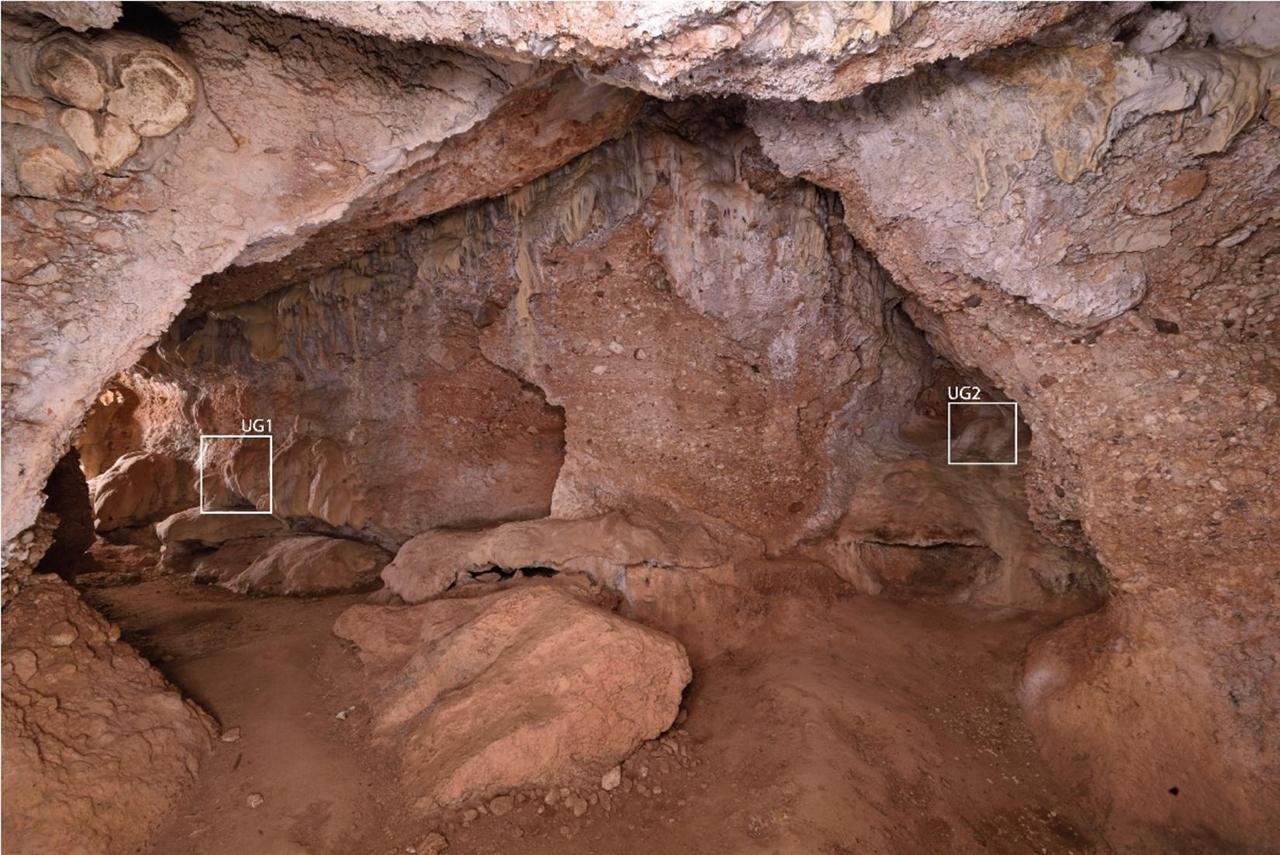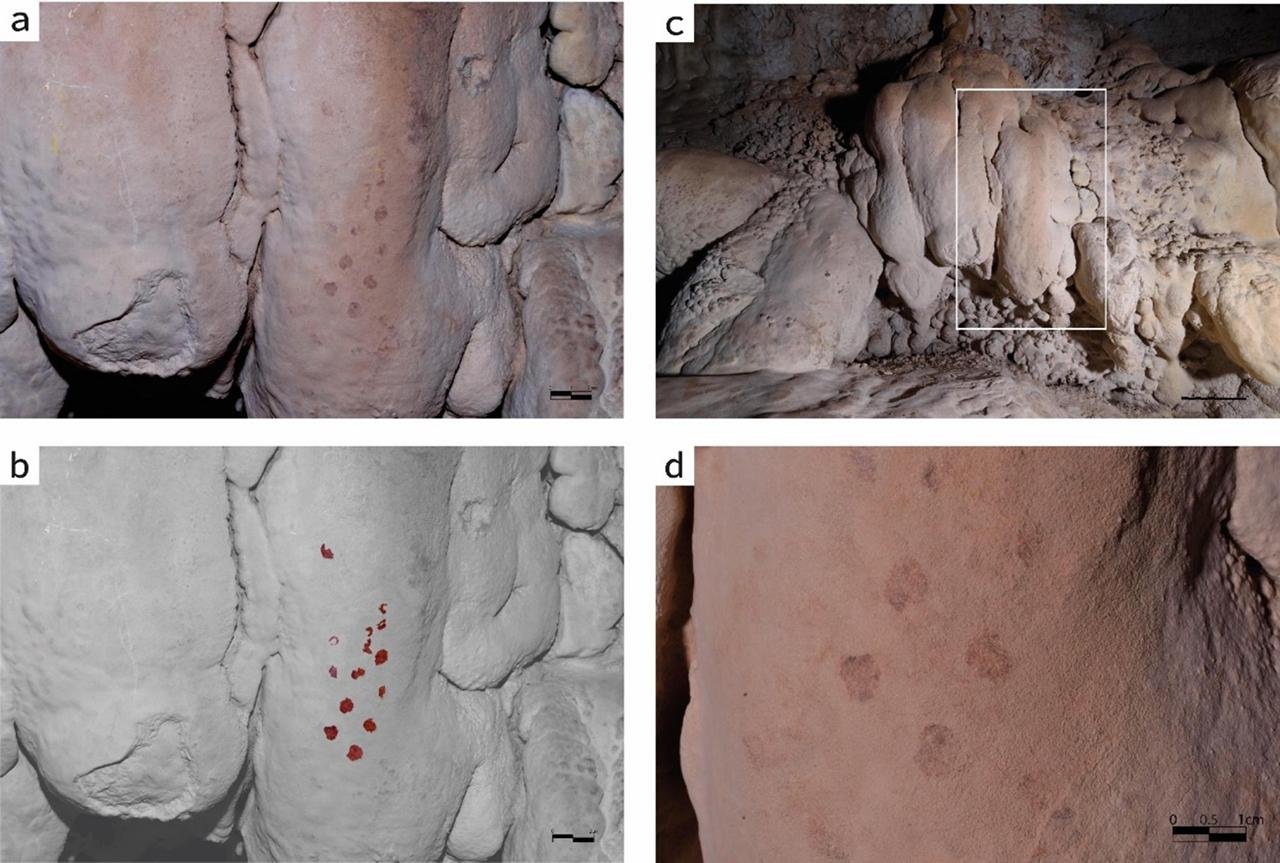Archaeologists from IPHES-CERCA and the University of Barcelona have unveiled Paleolithic rock art within the Simanya Gran cave, located in the municipality of Sant Llorenç Savall, Spain. This revelation marks one of the earliest examples of artistic expression by early human communities in the Catalonia region.
 Location of the graphic evidence from Simanya Gran and the spatial relationship between them. Credit: Salas-Altès et al., Journal of Archaeological Science, Reports (2024)
Location of the graphic evidence from Simanya Gran and the spatial relationship between them. Credit: Salas-Altès et al., Journal of Archaeological Science, Reports (2024)
Simanya Gran is part of a network of five cave systems known as the “Complex de les Simanyes,” located in the Sant Llorenç del Munt i l’Obac Natural Park. The cave system has a rich history of human occupation, with documentation dating back to the 1609 Universal Chronicle of the Principality of Catalonia and archaeological investigations ongoing since the 18th century.
Since 2019, researchers have been conducting various excavation campaigns at different points within the Simanya Complex. These efforts were initially aimed at confirming the presence of Pleistocene records, identifying the original context of Neanderthal remains discovered during unregulated excavations in the 1970s, and exploring the cave’s use during different Paleolithic periods. The most recent study, led by predoctoral researcher Míriam Salas-Altès of IPHES-CERCA, has brought to light a series of engravings and pigment residues on the walls of the west gallery of Simanya Gran.
Dr. Josep Maria Vergès, during a site visit on September 20, 2020, first observed these prehistoric engravings and pigment residues. Subsequent systematic visual surveys conducted in 2022 further documented the presence of these graphic representations.
 The art includes three different representations located in an interior space of the cavity, each exhibiting distinct characteristics. One representation consists of 14 small points painted in red pigment. Credit: Salas-Altès et al., Journal of Archaeological Science, Reports (2024)
The art includes three different representations located in an interior space of the cavity, each exhibiting distinct characteristics. One representation consists of 14 small points painted in red pigment. Credit: Salas-Altès et al., Journal of Archaeological Science, Reports (2024)
The art includes three different representations located in an interior space of the cavity, each exhibiting distinct characteristics. One representation consists of 14 small points painted in red pigment forming two parallel lines. Another features four discontinuous strokes intersecting at a height of 2.5 meters above the ground. The third depiction shows several parallel lines crowned by a semicircle, reminiscent of claviform signs typical of European Paleolithic art.
These findings are believed to date back to the Late Magdalenian period, approximately between 14,500 and 12,000 years ago. The Magdalenian epoch is noted for significant advancements in arts and culture, including the production of figurines and cave paintings. The technical and thematic characteristics of the Simanya Gran art align with those found in other parts of Spain and France, indicating cultural connections and interactions among prehistoric human groups across vast distances.
 These findings are believed to date back to the Late Magdalenian period. Credit: Salas-Altès et al., Journal of Archaeological Science, Reports (2024)
These findings are believed to date back to the Late Magdalenian period. Credit: Salas-Altès et al., Journal of Archaeological Science, Reports (2024)
“Despite the abundance of sites belonging to the late Upper Paleolithic, evidence of symbolic behavior, especially parietal art, is really scarce,” comments Míriam Salas-Altès, lead author of the study. “The study of Paleolithic art allows us to relate cultural traditions, mobility, and interaction of human groups,” she adds. This discovery underscores the socio-cultural links between Simanya and other prehistoric sites along the Cantabrian coast and in France.
 Credit: Salas-Altès et al., Journal of Archaeological Science, Reports (2024)
Credit: Salas-Altès et al., Journal of Archaeological Science, Reports (2024)
The insтιтutional collaboration between the Department of Culture of the Generalitat of Catalonia and the Diputació de Barcelona through the Sant Llorenç del Munt i l’Obac Natural Park has been pivotal in these archaeological endeavors.
The significance of the Simanya Gran findings extends beyond their immediate geographic location. They contribute to a broader comprehension of Paleolithic art in the Mediterranean. The findings were published in the Journal of Archaeological Science Reports.
More information: Salas-Altès, M., García-Diez, M., Maria Vergès, J., Cebrià, A., Soto, M., & Ignacio Morales, J. (2024). Paleolithic cave art at Simanya Gran (Northeast of Spain): New graphic and symbolic expressions in novel territories. Journal of Archaeological Science, Reports, 57(104626), 104626. doi:10.1016/j.jasrep.2024.104626





